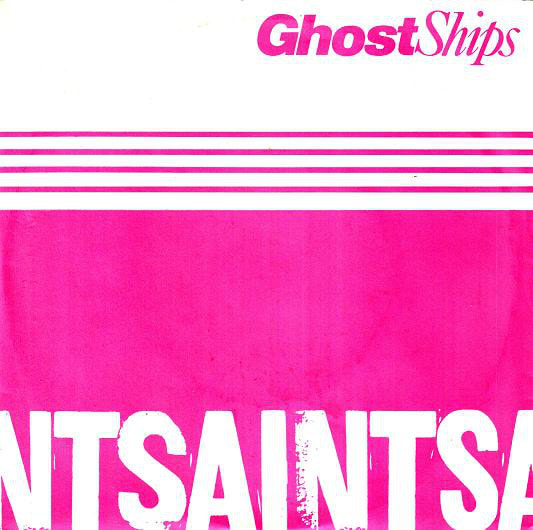|
A LITTLE MADNESS TO BE FREE
THE SAINTS (RCA) It's not enough to say that Chris Bailey is a unique, affecting but erratic artist who, in A Little Madness to Be Free, his group the Saints' sixth album, has made his most coherent statement since... well, put it this way, the album seems finished in a way that the last two, Casablanca and, to a lesser extent, The Monkey Puzzle, never were. "Not enough," though, because it's not only an artist that changes (or stays the same) but also the critic, and the critic's perception of the artist. To some of us, our first awareness of Chris Bailey was almost ten years ago, fronting the Saints, belting out "(I'm) Stranded" and taking belts from a bottle of Irish whiskey. Given the Saints' position as harbinger of the punk revolution in Australia, and their essence as well, one's relationship with the group was more than academic, it was an emotional and spiritual investment. In the Saints was part of me. When the schism occurred within the group, after the third album Prehistoric Sounds, when original guitarist Ed Kuepper left to form Laughing Clowns, loyalties were divided, But Bailey stuck to his guns, and eternal credit to him for it, but at the time the post-punk tide was turning against rock'n'roll in the traditional sense, and this critic for one was quick to condemn Bailey for his 'redundant' predilections. Oh how the tide turns! Now, after the disillusionment of 'progressive' post-punk rock - I mean, was it all so that Duran Duran would rise to the top? - there is a tangible return to classicism in rock that is imperative and certainly the most encouraging sign on pop's current horizon. And Chris Bailey's still with us, still doing it and at times better than ever. Although it would take a lot to remove Prehistoric Sounds from my mind as the superlative Saints' album - I still listen to it - there can be no doubt that both The Monkey Puzzle and Casablanca, despite occasional scrappiness, contained some fine moments, as Chris Bailey the songwriter honed his skills. Chris Bailey the singer, what with his solo excursions, moves closer towards mastery. So in some ways A Little Madness to Be Free is a consumate sort of album, and although at no point is it made clear as to who 'the Saints' actually are - the sleeve credits no less than twelve musicians as 'irresponsible' - the sound is consistent throughout. Daresay, this is the best Saints' album since Prehistoric Sounds. Daresay... But just as Prehistoric Sounds was flawed, A Little Madness to Be Free has some annoying shortcomings. I could quibble over the cover - a Roger Dean-like seascape which only invites further comparison with Prehistoric Sounds - but that's probably below the belt. There are some great songs on A Little Madness to Be Free but they are occasionally marred by playing that is less than totally sympathetic. Two strains intersect in Chris Bailey - the reflective, bluesy folky, and the extroverted, soulful rock'n'roller - and to my way of thinking the letter detracts from the former. (Certainly, the big band side of Bailey's recent solo live album, What We Did On Our Holidays, was vastly inferior to the acoustic side.) A song like "It's Only Time," for instance, a highlight of Bailey's acoustic set, has been completely destroyed on the album by a Motownesque bass line beneath a quasi-trad jazz treatment. At worse, the Saints are a heavy-handed, meat'n'potatoes-only outfit. But that's at worse... Other songs familiar from Bailey's acoustic set emerge more successfully - the single "Ghost Ships" remains resoundingly powerful despite less subtlety, and "Photograph" is still hauntingly beautiful and brooding, swathed in strings and brass. It is, in fact, the strings and brass - the arrangements – that are a feature of A Little Madness to Be Free, lifting the songs, punctuating and colouring them, framing the gritty realism of Bailey's vocals. All the songs offer a relaxed singalongability, the album flows from start to finish. The high points, however, next to "Ghost Ships" and "Photograph," are the new songs where Bailey allows his superior abilities as a balladeer to take charge, prompting an ensemble performance to match his own. The current single "Imagination" is a happy up-tempo exception, but it's the sombre tones of Side 2 that leave a more lasting impression. "Wrapped Up and Blue," for example, is gorgeous - making reference to Dylan in more ways than one, it's pure Blonde On Blonde, and that's meant as a compliment. Anyone who even hints at Dylan's range must he doing something right, and there are shades of that strength throughout A Little Madness to Be Free. Ultimately, it's a fairly good album, but Chris Bailey is capable of better. What he has to do is realize where his true strengths lay, and channel his energies accordingly, and solidify a Saints' line-up that is fully sympathetic to his objectives. His best work is still ahead of him yet. |

